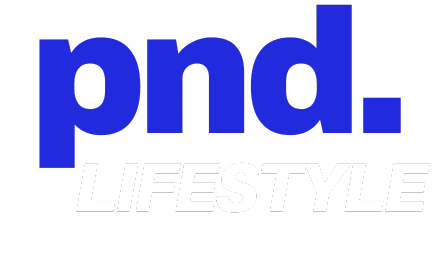5 Pay-Per-Click Advertising Tips for Better ROI: Boost Your Campaign Success

In the world of digital marketing, Pay-Per-Click (PPC) advertising is a powerful tool that can help you reach your target audience quickly and efficiently.
With the right strategy, PPC can drive significant traffic to your website, leading to higher engagement and conversions.

How can you maximize your return on investment (ROI) with PPC advertising? Understanding key strategies and techniques is essential for making the most out of your PPC campaigns.
By focusing on effective tactics, you can optimize your ads and achieve better results.
1) Keyword Research
Effective keyword research is the backbone of any successful PPC campaign.
Using tools like Google Keyword Planner or SEMrush, you can identify relevant keywords with high search volumes.
Start by brainstorming ideas.
Think about what terms potential customers might use when searching for your products or services.
Focus on high-intent and product-specific keywords, as these will lead searchers right to you.
Analyze your competitors.
Look at what keywords they are bidding on.
This will give you insights into potential gaps in your keyword strategy and opportunities to get ahead.
Organize your keywords into groups.
This helps in creating targeted ad campaigns.
Grouping similar keywords together ensures that your ads are highly relevant to what users are searching for.
Use both broad and narrow keywords.
Broad keywords will get you more traffic, but may not always be as targeted.
Narrow, or long-tail keywords, while having lesser traffic, usually have higher conversion rates.
Keep revisiting and refining your keyword list.
As trends evolve, some keywords may become more or less popular.
Regular updates will help you stay ahead of the competition.
For more tips on keyword research, read this guide on PPC keyword research.
2) Compelling Ad Copy
Your ad copy is crucial for grabbing attention and encouraging clicks.
Start with a strong headline that stands out.
Make sure it clearly states what you are offering.
Use concise and clear language.
Avoid jargon or complex words.
Focus on the benefits your product or service provides.
Make it obvious why someone should be interested.
Incorporate a strong call-to-action (CTA).
Phrases like “Buy Now,” “Learn More,” or “Get Started” can motivate users to click.
Make your CTA direct and urgent.
Highlight unique selling points.
What makes your product or service different from others? Emphasize features that set you apart.
Craft ad copy that speaks to your target audience.
Understand their needs and preferences.
Tailor your message to resonate with them.
A/B testing your ad copy can help you see what works best.
Create different versions and compare performance.
Use the insights to refine your approach.
Ensure your ad copy aligns with your landing page.
Consistency between the ad and landing page improves user experience and conversion rates.
Using emotional triggers can be effective.
Words that evoke curiosity, excitement, or urgency can increase engagement.
However, be sure to stay honest and avoid overpromising.
Keep your ad copy relevant to the selected keywords.
This relevance can improve your ad’s quality score, leading to better placement and lower costs.
Monitor and optimize your copy regularly.
Even small tweaks can lead to significant improvements in your PPC campaigns.
3) A/B Testing
A/B testing is a key strategy to improve your pay-per-click (PPC) campaigns.
By running experiments with different ad variations, you can see what works best for your audience.
Start by testing different ad copies.
Change headlines, descriptions, and calls-to-action (CTAs) to find out which ones get the most clicks.
Experiment with different landing pages.
Test various designs, layouts, and messages to see which version leads to more conversions.
Run your tests simultaneously.
This approach helps minimize time-based factors that could affect your results.
Only test one element at a time.
Changing multiple elements can make it hard to determine which change caused the improvement.
Remember to test regularly.
Continuous testing can help you stay up-to-date with changing customer preferences.
Using extensions like site links and callouts can also be part of your A/B tests to enhance ad visibility.
For best practices on A/B testing, check out this Beginner’s Guide.
Implementing these tips can help you get better returns on your PPC investment.
Consistent A/B testing can make a big difference in your ad performance, leading to higher click-through rates and conversions.
This methodical approach helps you understand your audience better and tailor your ads to meet their needs effectively.
4) Negative Keywords
Negative keywords help make your PPC ads more effective.
They filter out unwanted traffic by preventing your ads from showing for irrelevant searches.
This ensures your budget is spent on clicks that are more likely to convert.
Using negative keywords can improve your Click-Through Rate (CTR).
When your ads appear for relevant searches, more people will click on them.
This can lead to higher quality prospects and better engagement.
Negative keywords are vital for reducing costs.
By avoiding irrelevant clicks, you save money that can be used for more promising searches.
This can improve your Return on Investment (ROI) significantly.
Building a negative keyword list requires some research.
Look at search terms that trigger your ads but don’t result in conversions.
You can then add these to your negative keyword list.
It’s important to keep updating your negative keyword list.
As trends and search behaviors change, some keywords may no longer be relevant.
Regular updates ensure your PPC campaigns stay effective.
Using tools like Google Keyword Planner can help find negative keywords.
These tools provide insights into search terms that are not relevant to your business.
This helps you create a more optimized list.
Negative keywords also help improve ad relevance.
When Google sees that your ads match the searcher’s intent, it can improve your ad rank.
This means your ads will be shown more often to the right audience.
For more on this, visit Maximizing ROI with Pay-Per-Click (PPC) Advertising.
In conclusion, negative keywords are essential for any PPC campaign.
By filtering out irrelevant traffic, you can improve CTR, reduce costs, and increase ROI.
Regularly updating and optimizing your negative keyword list will keep your campaigns effective and efficient.
Learn more about using negative keywords at How to Use Negative Keywords to Positively Impact Your Campaigns.
5) Ad Extensions
Ad extensions can greatly enhance the performance of your PPC campaigns.
They provide additional information alongside your main ad text, which can make your ads more engaging to users.
Ad extensions improve visibility.
With these, your ads can take up more space on the search results page, making them more noticeable.
This can increase your click-through rates (CTR).
There are several types of ad extensions you can use.
Site link extensions direct users to specific pages on your website.
Call extensions let mobile users call your business directly from the ad.
Location extensions display your business address, which is useful for local businesses.
Structured snippets let you highlight specific aspects of your services or products.
Using ad extensions can lower your cost per click (CPC) and improve your ROI.
Make sure your ad extensions are relevant and useful.
Irrelevant extensions may cause users to ignore your ads or even mark them as spam.
You can track the performance of your ad extensions.
Analyze this data to see which extensions are working best and which need adjustments.
For more information, you can read about implementing ad extensions and how they affect your PPC campaigns.
Understanding PPC Fundamentals
Pay-Per-Click (PPC) advertising is a powerful way to drive traffic and generate leads.
Grasping the basics of PPC and knowing how auctions work can significantly boost your campaigns.
What is Pay-Per-Click Advertising?
Pay-Per-Click advertising is a model where you pay a fee each time someone clicks on your ad.
It’s a way of buying visits to your site rather than earning them organically.
This model can quickly drive traffic to your website.
PPC ads typically appear on search engines like Google.
When someone searches for keywords related to your business, your ad can show up if you have a relevant campaign running.
Advertisers bid on keywords, and the right bid combined with a high-quality ad can get you top placement.
You need to focus on creating compelling ad copy and choosing the right keywords.
Tools like Google Keyword Planner can help you identify keywords that are worth bidding on, ensuring your ads reach the right audience.
How PPC Auctions Work
PPC auctions determine which ads appear and their placement.
When someone searches a keyword you’ve bid on, an auction is triggered.
Google’s system then decides which ads to show based on the bid amount and ad quality.
The quality score is crucial.
It considers factors like ad relevance, expected click-through rate, and landing page experience.
A higher quality score can lower your costs.
Your ad rank is calculated using your quality score and bid amount.
Even if your bid is lower than a competitor’s, a high-quality score can still get your ad placed higher.
Properly managing your bids and improving your ad quality should be ongoing tasks.
Creating Effective Ad Campaigns
To create effective PPC ad campaigns, you need thorough keyword research and compelling ad copy.
By mastering these areas, you can make your ads more targeted and impactful.
Keyword Research Strategies
Effective keyword research is key to successful PPC campaigns.
Start by using tools like Google Keyword Planner to find relevant keywords.
Look for keywords with high search volumes but low competition.
Consider long-tail keywords—phrases that are more specific.
These often have lower competition and higher conversion rates.
Use negative keywords to exclude terms that might attract irrelevant traffic.
This can help you avoid wasting your ad budget.
Regularly update and refine your keyword list.
Trends change, and staying current with high-performing keywords can greatly improve your ROI.
Monitor performance metrics to identify which keywords are driving the most valuable traffic.
This ongoing adjustment ensures your campaign remains effective.
Crafting Compelling Ad Copy
Your ad copy needs to capture attention and prompt action.
It should be clear, concise, and include a strong call to action (CTA).
Make sure your headline is attention-grabbing and to the point.
Highlight the unique selling points of your product or service.
Use compelling language that encourages users to click on your ad.
For example, phrases like “limited time offer” or “exclusive deal” can create urgency.
Incorporate keywords into your ad copy to improve relevance and quality scores.
This can also enhance your ad’s visibility.
Use A/B testing to compare different versions of your ad copy.
This helps you determine what messaging works best and continually improve your ads.
Analyzing and Optimizing for ROI
To get the best return on investment (ROI) from your pay-per-click (PPC) advertising campaigns, focus on tracking performance metrics and continuously testing ad elements.
Both of these strategies will help you improve the effectiveness of your ads and make more informed decisions.
Tracking Your PPC Performance
Tracking the performance of your PPC campaigns is essential.
Start by setting up Google Analytics and linking it to your PPC accounts.
This will let you monitor various metrics like click-through rates (CTR), cost-per-click (CPC), conversion rates, and return on ad spend (ROAS).
Use tools like Google Analytics and Google Ads reports to track important metrics.
Creating custom dashboards can make it easier to visualize data and identify trends.
Ensure you capture key performance indicators (KPIs) that align with your business goals.
Common KPIs include conversion rate, customer acquisition cost (CAC), and lifetime value (LTV) of the customer.
A/B Testing Ad Elements
A/B testing allows you to compare two versions of an ad to see which performs better.
Start by changing one element at a time, like headlines, images, or call-to-actions.
This helps you pinpoint exactly what impacts performance.
Focus on headlines and ad copy first, as these elements most directly affect user engagement.
Use tools like Google Optimize or Optimizely to set up and run your A/B tests seamlessly.
Remember to test variations for a sufficient period to gather enough data.
Aim for statistically significant results before implementing any changes.
By consistently A/B testing, you fine-tune your ads and improve your PPC ROI over time.
Avoid making too many changes at once, as this can complicate analysis.
Stick to simple, clear adjustments to understand what works best.






